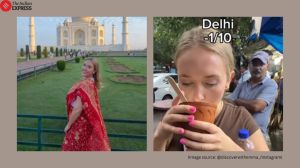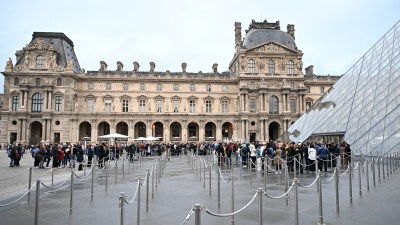Stay updated with the latest - Click here to follow us on Instagram
Singing a new tune
When young sitar talent Purbayan Chatterjee organised a big bash for the launch of his debut album,Stringstruck,last year in Mumbai,it turned out to be a bigger deal than most realised.
The crowded marketplace of Indian classical music makes artistes turn publicity-savvy to be heard
When young sitar talent Purbayan Chatterjee organised a big bash for the launch of his debut album,Stringstruck,last year in Mumbai,it turned out to be a bigger deal than most realised. It was hosted at the Blue Frog,one of the prime live music venues in the country,and the guest list included big names such as Shankar Mahadevan and Taufiq Qureshi. This might have been an unlikely setting for the launch of an Indian classical album,but Chatterjee knew he was moving in the right circles. Even for classical musicians,marketing is very important these days, Chatterjee says,there is a lot of competition these days and it is difficult to break through the clutter,unless you have marketing savvy. And talent,of course, he adds,with a laugh.
Classical music is gradually becoming more prominent,even fashionable,thanks to the younger generation of musicians such as Chatterjee,and their unconventional marketing methods. Aishwarya Natarajan,owner of Indianuance,an artist management and concert-programming company,says,This is a great time for Indian classical music. A lot of young people are seriously pursuing classical music and unlike for the older generation of musicians,there are many more platforms for them.
Until a few years back,there was a scarcity of platforms for classical talents in the country. It was to address this that festivals such as Naveen Kalakar in Bhubaneshwar and the monthly Umang in Mumbai,organised by the National Centre for Performing Arts (NCPA),Mumbai,were instituted. However,Dr Suvarnalata Rao,the head of programming for Indian music at NCPA,explains that the problem had eventually evolved into a different one. She explains,We were worried a few years back about how to get these emerging artistes a good platform,but now there are enough of them. The problem now is: where do these artistes go from here?
Its a valid question that artistes are taking seriously. Theyre hiring publicists and engaging with the media and understanding that in this age of 15 minutes of fame,one has to ensure that one is always in the public consciousness. Whether it is santoor player Rahul Sharmas Confluence collaborations with international names like Richard Clayderman and Kenny G,or sitar artiste Ravi Charis jam with rock band Zero at the NH7 Weekender in Pune last year or tabla maestro Aditya Kalyanpurs tour with AR Rahman or Chatterjees high-glitz album launch at a premier club,Indian classical music is getting more glamorous and publicity friendly.
The internet is a powerful tool. The power of the Web can be intelligently harnessed for this purpose, says Kumar,You can record your music and put it up for the world to see. Kalyanpur and Chatterjee,too,believe in the power of the internet. We have to reach out to the younger generation, the latter explains,I love it when older audiences come and listen to me play,but how long will they be there? I need to ensure that I have an audience who will listen to me for the next 10 years. Thats why Chatterjee goes on Facebook to connect with young people.
Its this need to connect with younger audiences that has led the younger generation musicians to experiment with their music. Natarajan points out that part of her job as an artiste manager is to figure out what works well for which artiste and in which market. Accordingly,she makes the suggestions. Sometimes it involves suggesting trying a different style or modifying a current style of singing a bit. A lot of young musicians are open to suggestions in order to reach their listeners, she says. Kalyanpur,who has experimented widely with fusion and world music,adds,It is a great way to engage the interests of young listeners and becomes a gateway to their interest in classical music itself.
Rao issues a word of caution. A lot of younger artistes are too impatient to delve deep into classical music. But without doing that,they cant hope to experiment well. But the efforts of the artistes seems to have paid off,as Kalyanpur attests. Ive seen a lot of younger people being drawn in for concerts. Theyre now beginning to realise that you dont need to understand classical music to appreciate it: its a universal language. It just needs to be given a chance. he says.







